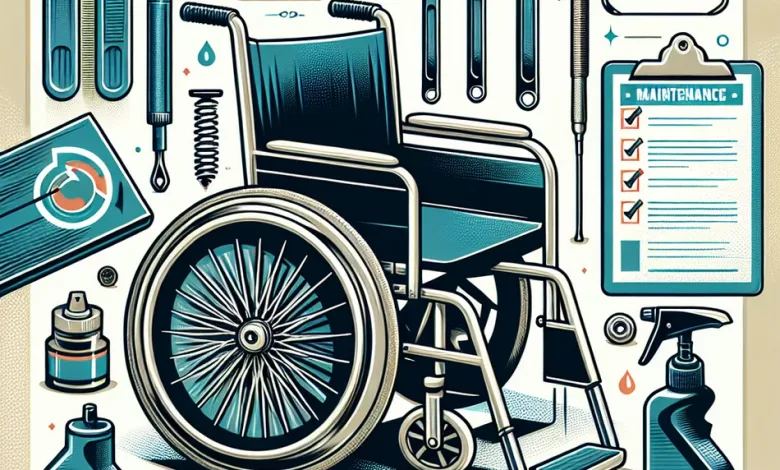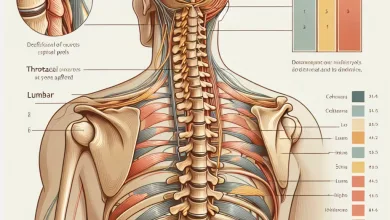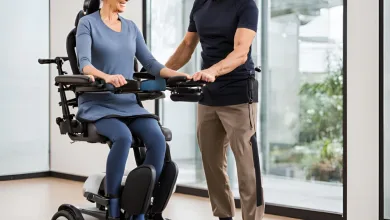Manual Wheelchair Maintenance: Your Ultimate Care Guide

Table of Contents
Essential Tips for Keeping Your Manual Wheelchair in Top Shape
Maintaining a manual wheelchair is crucial for ensuring its longevity, performance, and overall safety. In this comprehensive guide, we’ll cover everything you need to know about manual wheelchair maintenance, from regular cleaning to detailed safety checks. Following these tips will keep your wheelchair in excellent condition and allow you to enjoy smoother mobility.
Why Manual Wheelchair Maintenance is Important
Manual wheelchairs are invaluable for individuals who rely on them for daily mobility. However, like any other piece of equipment, they require regular upkeep to function optimally. Proper maintenance not only extends the chair’s life but also enhances its performance and ensures user safety. Let’s dive into the key areas you must focus on for effective manual wheelchair maintenance.
Now that we’re all on the same page, let’s explore the critical aspects of keeping your wheelchair in tip-top shape.
Manual Wheelchair Cleaning: More Than Just Aesthetics
You might think cleaning your wheelchair is just about looking good, but it’s so much more than that. Regular manual wheelchair cleaning is the foundation of good maintenance. Here’s how to do it right:
- Wipe down the frame daily with a damp cloth
- For a more thorough cleaning, use mild soap and water weekly.
- Pay extra attention to crevices and joints where dirt can accumulate
- Dry thoroughly to prevent rust
- For fabric parts, vacuum regularly and spot clean as needed
Keep in mind, a clean wheelchair is not just for looks – it allows you to identify potential problems early and ensures everything operates smoothly.
Tire Troubles? Not with Regular Wheelchair Tire Pressure Checks
Your wheelchair’s tyres are connected to the ground, so keeping them in good shape is crucial. Regular wheelchair tyre pressure checks should be part of your routine. Here’s what you need to know:
- Check tyre pressure at least once a week
- Use a tyre gauge to ensure accuracy
- Inflate to the recommended pressure (usually listed on the tyre)
- Look for signs of wear or damage while checking the pressure
- Replace tires when the tread is worn or if you notice any cracks or bulges
Proper tyre maintenance makes your ride smoother and reduces the effort needed to propel yourself.
Tightening Up: The Importance of Wheelchair Hardware Tightening
Over time, the nuts and bolts on your wheelchair can loosen due to regular use. That’s why wheelchair hardware tightening is a crucial part of maintenance. Here’s a quick guide:
- Check all visible nuts and bolts weekly.
- Utilize the correct tools to secure any loose hardware.
- Take care not to over-tighten as it may damage the components.
- Pay special attention to areas that bear the most weight.
- If you’re unsure, consult a professional.
Keeping everything snug prevents rattles, improves stability, and even prevents accidents.
Stopping Power: Wheelchair Brake Maintenance
Your brakes are your safety net, so wheelchair brake maintenance is non-negotiable. Here’s how to keep them in working order:
- Test your brakes daily before use
- Clean brake components regularly to remove dirt and debris
- Adjust brake tension as needed
- Check for wear on brake pads and replace them when necessary
- Lubricate moving parts of the brake mechanism
Remember, well-maintained brakes aren’t just about stopping – they’re about giving you confidence in your chair’s performance.
Wear and Tear: Inspecting Wheelchair for Wear and Tear
Regular use naturally leads to wear, but catching issues early can prevent more significant problems. Here’s how to go about inspecting a wheelchair for wear and tear:
- Check the frame for cracks or bends
- Inspect welds for any signs of weakness
- Look for fraying or tears in upholstery
- Examine casters for smooth rotation and wear
- Check spokes on wheels for tightness and damage
Make this inspection a weekly habit, and you’ll catch minor issues before they become big headaches.
Smooth Operator: Lubricating Wheelchair Moving Parts
Keeping things moving smoothly is all about lubricating wheelchair moving parts. Here’s your quick guide:
- Identify all moving parts (bearings, hinges, etc.)
- Clean parts before lubricating
- Use a silicone-based lubricant for most components
- Apply sparingly – too much attracts dirt
- Wipe away excess lubricant
A well-lubricated chair is more accessible to manoeuvre and puts less strain on your body.
Safety First: Wheelchair Safety Checks
Your wheelchair is your mobility lifeline, so regular wheelchair safety checks are crucial. Here’s a checklist (download) to follow:
- Ensure all parts are securely attached
- Check that brakes engage fully
- Verify that anti-tip devices are in place and functional
- Test the stability of the chair
- Ensure footrests are secure and at the proper height
Make these checks part of your daily routine to ensure your chair is always safe to use.
Staying on Track: Creating a Regular Wheelchair Maintenance Schedule
Regularity is crucial when it comes to maintenance.Creating a regular wheelchair maintenance schedule helps you stay on top of things. Here’s how to set one up:
- Daily checks (brakes, tyre pressure)
- Weekly cleaning and hardware checks
- Monthly deep cleaning and lubrication
- Quarterly professional check-up
- Annual comprehensive service
Stick to your schedule, and you’ll be rewarded with a chair that performs reliably year after year.
Performance Boost: Wheelchair Performance Tips
Want to get the most out of your chair? These wheelchair performance tips will help:
- Keep tyres properly inflated for easier rolling
- Adjust your seating position for optimal propulsion
- Use lightweight accessories to reduce overall weight
- Keep moving parts well-lubricated
- Consider upgrading to high-performance wheels if you’re very active
Remember, a well-maintained wheelchair is a high-performing chair!
On the Move: Wheelchair Mobility Maintenance
Wheelchair mobility maintenance is all about keeping your freedom of movement. Here are some key points:
- Consistently inspect and correct the alignment of your wheels.
- Keep your chair balanced and adapt as your needs change
- Consider periodic reassessment of your chair’s fit
- Practice proper pushing techniques to reduce strain
- Stay active and maintain your physical strength
By focusing on mobility maintenance, you can ensure that your chair continues to meet your evolving needs.
Benefits and Drawbacks of DIY vs. Professional Maintenance
| DIY Maintenance | Professional Maintenance |
| Pros: | Pros: |
| – Cost-effective | – Expert knowledge |
| – Immediate action | – Advanced tools |
| – Familiarity with your chair | – Comprehensive service |
| Cons: | Cons: |
| – Limited expertise | – Can be expensive |
| – Potential for mistakes | – May require scheduling |
| – Time-consuming | – Less frequent |
FAQs: Your Manual Wheelchair Maintenance Questions Answered
1. How often should I clean my wheelchair?
Wipe down daily, deep clean weekly.
2. What’s the best lubricant for wheelchair parts?
Silicone-based lubricants are generally recommended.
3. How often should I have my wheelchair professionally serviced?
At least once a year, more if you use it heavily.
4. Can I adjust my own brakes?
Yes, but consult your manual and be careful not to over-tighten.
5. How do I know when it’s time to replace my tyres?
When the tread is worn, or you notice cracks or bulges.
6. What should I do if I hear a strange noise from my wheelchair?
Investigate immediately and tighten any loose parts.
7. Is it normal for my wheelchair to need frequent adjustments?
Some adjustments are regular, but frequent issues may indicate a problem.
8. Can the weather affect my wheelchair’s performance?
Yes, extreme temperatures and moisture can impact various components.
9. How can I prevent rust on my wheelchair?
Keep it dry and clean regularly, and touch up any chipped paint promptly.
10. What’s the most important daily maintenance task?
Checking your brakes and tyre pressure before use.
By following these guidelines and making manual wheelchair maintenance a regular part of your routine, you’ll ensure that your chair remains a reliable partner in your daily life. Remember, a well-maintained wheelchair isn’t just about function – it’s about maintaining your independence and quality of life. So, keep those wheels rolling smoothly, and enjoy the freedom of a chair that’s always ready to go when you are!



